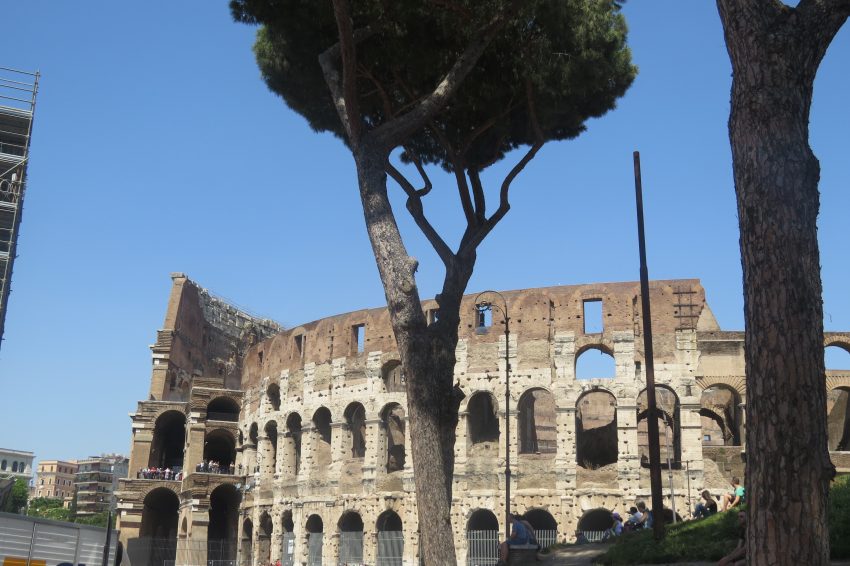Undeniably the most iconic site of Ancient Rome is the Colosseum. Identified as one of the top tourist attractions in the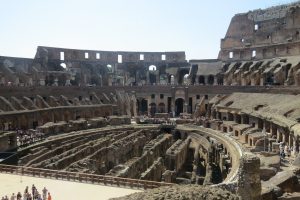 Eternal City, combined with the Roman Forum and a side trip to the Capitoline Museum, it provides the interested traveller with information about the rise and fall of the Roman Empire.
Eternal City, combined with the Roman Forum and a side trip to the Capitoline Museum, it provides the interested traveller with information about the rise and fall of the Roman Empire.
In this installation of the Ancient Sites of Europe we will start our tour at the Colosseum. This massive stone amphitheater was commissioned around AD 70-72 by Emperor Vespasian as a gift to the Roman people. Its opening was marked by 100 days of games including combat by gladiators and wild animals. Measuring 620 by 513 feet (190 by 155 meters) it was a freestanding structure made of stone and concrete. Each of its three stories had arched entrances and contained columns of different styles; Doric on the bottom, Ionic in the middle and the more ornate Corinthian at the top.
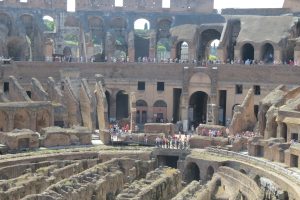 Inside it had seating for more than 50,000 spectators, arranged most likely by social ranking. Awnings were installed in order to protect Romans from the hot sun. It is also known that the arena could be flooded with water in order to stage mock naval battles.
Inside it had seating for more than 50,000 spectators, arranged most likely by social ranking. Awnings were installed in order to protect Romans from the hot sun. It is also known that the arena could be flooded with water in order to stage mock naval battles.
After more than four centuries of use the Colosseum fell into neglect and was primarily used to scavenge building supplies. By the 20h century two-thirds of the original building had been destroyed by weather, natural disasters, neglect and vandalism. Restoration began in the 1990s. Today it is a very popular site and a symbol of Rome’s long and tumultuous history.
Across from the Colosseum tourists can visit the ruins of the Roman Forum, strategically located on low ground between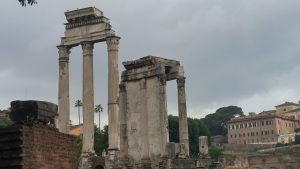 the Palatine Hill and Capitoline Hill. The Roman Forum was the centre of the ancient city of Rome and the location of important religious, political and social activities. Historians believe people started meeting there around 500 BC when the republic was formed.
the Palatine Hill and Capitoline Hill. The Roman Forum was the centre of the ancient city of Rome and the location of important religious, political and social activities. Historians believe people started meeting there around 500 BC when the republic was formed.
The site was rediscovered in 1803 and has been evacuated over the past 100 years. Since Romans built over earlier ruins, the remains of many centuries can be seen at the Forum.
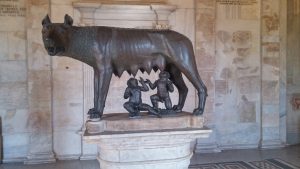 To round out your understanding of Ancient Rome be sure to stop into the Capitoline Museum. Among the many interesting and informative displays you can see the Capitoline Wolf, a statue depicting the legend of brothers Romulus and Remus. The story goes that after their grandfather was disposed the victor ordered the twins thrown into the Tiber River. A she wolf found them and raised them. As adults a conflict between the two saw Romulus kill his brother Remus, become king and name Rome after himself.
To round out your understanding of Ancient Rome be sure to stop into the Capitoline Museum. Among the many interesting and informative displays you can see the Capitoline Wolf, a statue depicting the legend of brothers Romulus and Remus. The story goes that after their grandfather was disposed the victor ordered the twins thrown into the Tiber River. A she wolf found them and raised them. As adults a conflict between the two saw Romulus kill his brother Remus, become king and name Rome after himself.
For more information on times and costs to visit the Capitoline Museum please go to http://www.museicapitolini.org/en/.
For more detail on the Colosseum and Roman Forum, and other ancient sites of Europe check out the History Channel Online at www.history.com.
